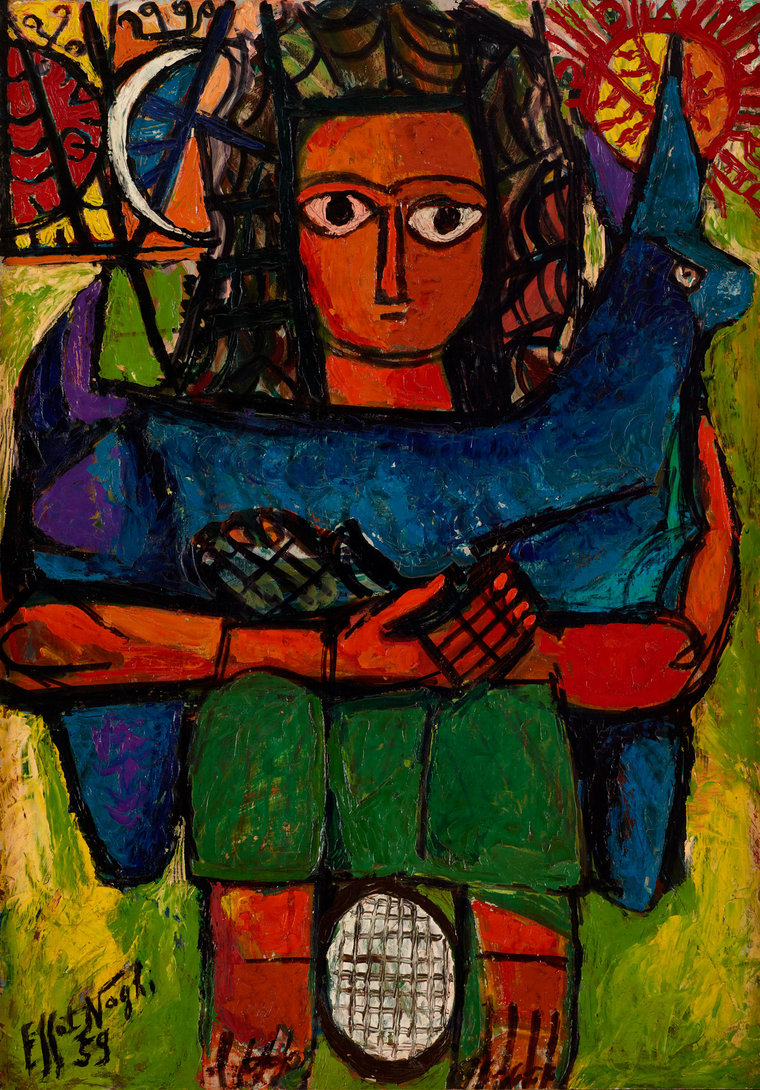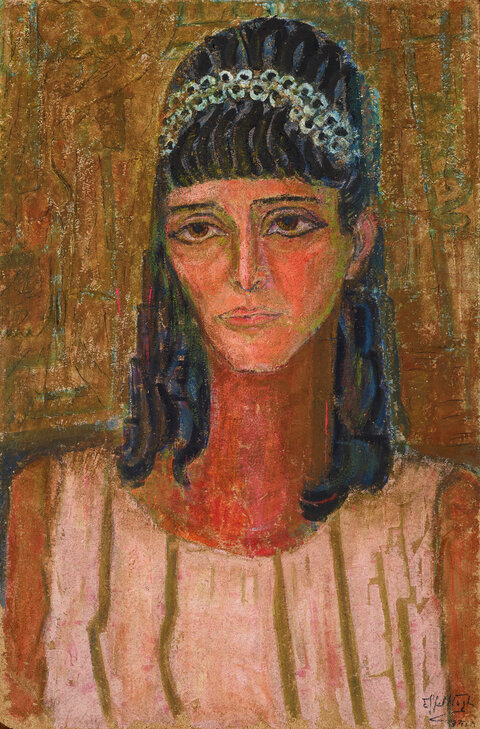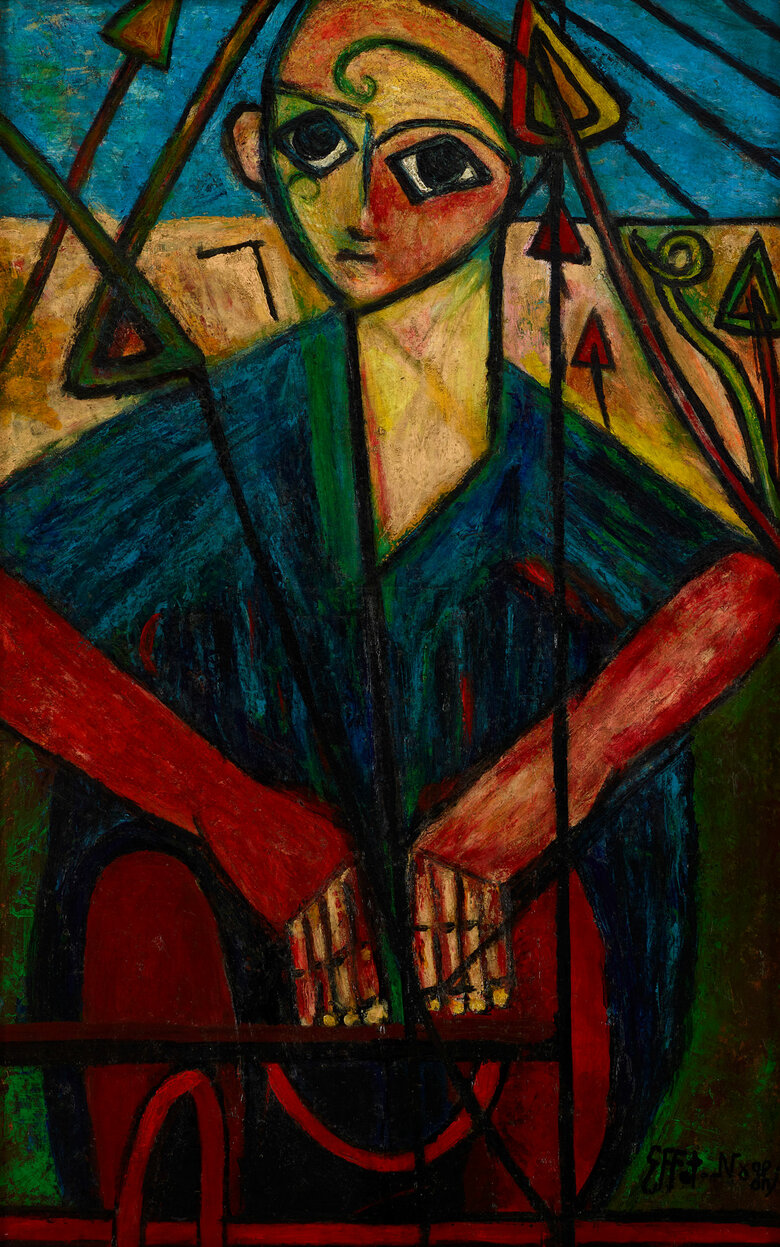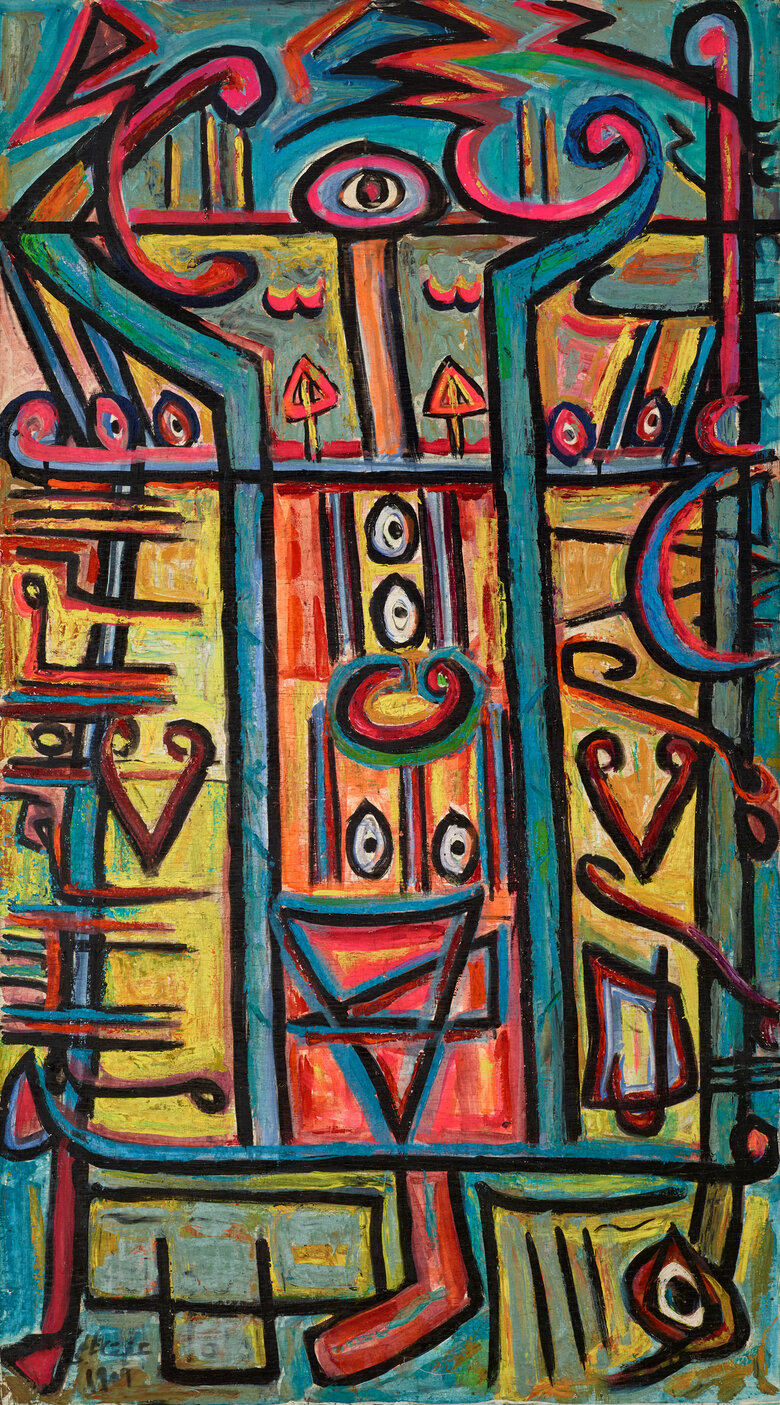Effat Naghi's painting, The Shepherdess and the Stars 1959, vividly illustrates her interest in mysticism and spirituality, which she had begun to delve into between 1954 and 1964. Executed in oil paint on board in simplified forms and artificial colors, the painting features a shepherdess holding a lamb – a symbol of sacrifice in all three Abrahamic religions. In the context of the artist's oeuvre, the painting could be interpreted as depicting Christian themes; the lamb is a universal symbol of Christ among Christians, and some traditions consider Mary the ‘Guardian’ or ‘Shepherdess’ of the ‘Divine Shepherd’. The spiritual overtones of the work come through in its animated fauvist style and vivid color palette.
As seen in the painting, the lamb is blue, and its woolen coat is conveyed in heavy, textured brushstrokes. Mary's body and face are contoured in black and saturated with thick layers of red paint, while her outfit is painted green. Her wide, bright, oval eyes transfix the viewer, whose gaze is drawn to her large, black pupils. A crown-like halo surrounds her head, behind which a sun and a crescent shine in opposite corners. In this and many other paintings, Effat abandons the conventional linear perspective of Western academic painting, manipulating elements of color and shape instead to suggest, but not imitate, the effect of depth. The flatness of the figures, as well as the black contouring and large eyes, evoke Egyptian Coptic art.
Before the 1950s, Naghi produced mainly realistic paintings. Moving beyond her academic training, She became one of the first Egyptian artists to experiment with different mediums and subject matters. Naghi's deviation from traditional academic painting began in Paris in 1949, when she was introduced to the French cubist painter André Lhote. As her instructor for nearly a year, he introduced her to Cubism and Fauvism, which would significantly impact her stylistic use of color, form, and shape.
During the 1960s and 1970s, Effat freed herself from the conventional mediums of most of her contemporaries and produced her most creative and celebrated works. She and her husband were ardent collectors, and she drew inspiration from the items they bought during their travels to Luxor and Sinai. Her husband, Saad Al-Khadem, whom she married at 40, was an artist and folklore researcher focused on British interventionism in Egypt, and she gained much from her research and expeditions alongside him. This allowed Naghi to research ancient Egyptian symbolism, Islamic and Coptic art, and astrology at the Great Cairo Public Library.
Though Naghi built upon the legacies of the male influences in her life, particularly her brother, Mohamed Naghi, and her husband, Saad Al-Khadem, she ultimately surpassed both their ambitions. Her brother, Mohamed Naghi, was a key figure in the first generation of modern Egyptian artists, championing the resurgence of folkloric heritage during the 1920s through a realist and expressionist style at a time marked by nationalistic enthusiasm following Egypt's independence in 1922. As her older brother, he nurtured her artistic talents and guided her education. However, Effat Naghi's artistic vision ultimately diverged from their more academic approaches. She was innovative, embracing an experimental artistic approach that engaged with Egyptian visual heritage, folk life, and mystic spirituality while creating her own modernist style.
Signed and dated 'Effat Naghi 59' (lower right).










